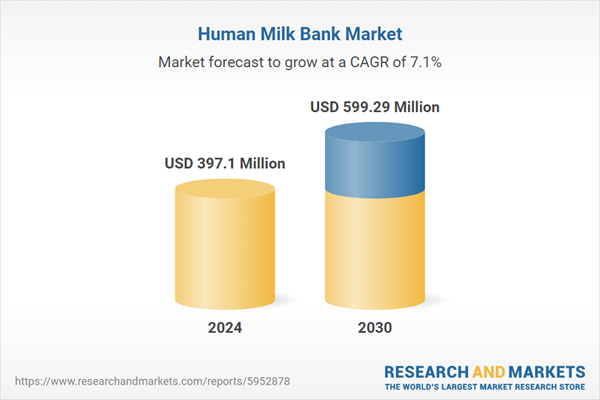Hospital-Based is the fastest growing segment, North America is the largest regional market
Speak directly to the analyst to clarify any post sales queries you may have.
10% Free customizationThis report comes with 10% free customization, enabling you to add data that meets your specific business needs.
Key Market Drivers
The global human milk bank market is significantly influenced by the escalating incidence of premature births and other neonatal illnesses. Infants born preterm or with severe medical conditions often require donor human milk as a critical intervention when maternal milk is unavailable, mitigating health risks and supporting development. For instance, according to the Centers for Disease Control and Prevention's National Center for Health Statistics, in March 2025, "Increases in Neonatal Intensive Care Admissions in the United States, 2016-2023", the percentage of infants admitted to a neonatal intensive care unit in the United States rose to 9.8% in 2023, indicating a substantial population needing specialized nutritional support.Key Market Challenges
The persistent imbalance between the escalating demand for donor human milk and its available supply represents a significant impediment to the growth of the Global Human Milk Bank Market. This disparity is frequently exacerbated by ongoing difficulties in recruiting and retaining suitable milk donors. Such supply constraints directly hamper the market’s ability to fully address the critical nutritional needs of premature and medically fragile infants, despite the increasing recognition of human milk's immunological and developmental benefits.Key Market Trends
Technological advancements in milk processing and safety are significantly reshaping the global human milk bank market by enhancing product quality and operational efficiency. Innovations focus on methods that preserve the nutritional and immunological integrity of donor human milk while ensuring microbiological safety. For example, research published by the Family Larsson-Rosenquist Foundation in August 2024 highlighted that preterm infants may derive more nutritional benefits from human donor milk processed by high pressure, a non-thermal treatment, as it minimally alters the protein profile compared to conventional thermal pasteurization, allowing important milk components to survive digestion intact. These advancements improve the therapeutic value of donor milk, encouraging wider adoption in neonatal care units and driving demand for advanced processing equipment.Key Market Players Profiled:
- Prolacta Bioscience, Inc.
- Milk Matters Milk Bank (Mowbray Maternity Hospital)
- KK Human Milk Bank
- Perron Rotary Express Milk Bank (PREM Bank)
- Royal Prince Alfred (RPA) Hospital
- Mothers Milk Bank Pty Ltd
- Mercy Health Breastmilk Bank
- Royal Brisbane and Women's Hospital (RBWH) Milk bank
- Yashoda Human Milk Bank
- Amravati by Rotary Club Of Amravati Midtown
Report Scope:
In this report, the Global Human Milk Bank Market has been segmented into the following categories:By Ownership:
- Hospital-Based
- Non-Profit Organizations
- Government
- Private Organizations
- Others
By End User:
- Premature Babies
- Infants with Gastrointestinal Disorders
- Infants with Metabolic Disorders
- Others
By Region:
- North America
- Europe
- Asia-Pacific
- South America
- Middle East & Africa
Competitive Landscape
Company Profiles: Detailed analysis of the major companies present in the Global Human Milk Bank Market.Available Customizations:
With the given market data, the publisher offers customizations according to a company's specific needs. The following customization options are available for the report.Company Information
- Detailed analysis and profiling of additional market players (up to five).
This product will be delivered within 1-3 business days.
Table of Contents
Companies Mentioned
The companies profiled in this Human Milk Bank market report include:- Prolacta Bioscience, Inc.
- Milk Matters Milk Bank (Mowbray Maternity Hospital)
- KK Human Milk Bank
- Perron Rotary Express Milk Bank (PREM Bank)
- Royal Prince Alfred (RPA) Hospital
- Mothers Milk Bank Pty Ltd
- Mercy Health Breastmilk Bank
- Royal Brisbane and Women's Hospital (RBWH) Milk bank
- Yashoda Human Milk Bank
- Amravati by Rotary Club Of Amravati Midtown
Table Information
| Report Attribute | Details |
|---|---|
| No. of Pages | 185 |
| Published | November 2025 |
| Forecast Period | 2024 - 2030 |
| Estimated Market Value ( USD | $ 397.1 Million |
| Forecasted Market Value ( USD | $ 599.29 Million |
| Compound Annual Growth Rate | 7.1% |
| Regions Covered | Global |
| No. of Companies Mentioned | 11 |









